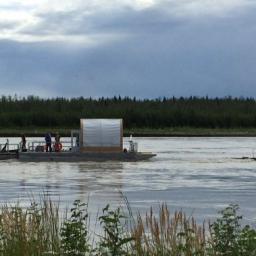Alaska’s quest to power remote villages
 Most people think the quest to electrify rural parts of the US was something that happened in the 1950s, but remote Alaskan villages still depend on flying-in barrels of diesel, priced as high as $10 per gallon, to power generators, with electricity prices of more than 40 cents per kilowatt hour - and that's after state subsidizes to equalize energy costs. "The last thing people who live in a place known for cold, dark and distance need is higher energy prices."
Most people think the quest to electrify rural parts of the US was something that happened in the 1950s, but remote Alaskan villages still depend on flying-in barrels of diesel, priced as high as $10 per gallon, to power generators, with electricity prices of more than 40 cents per kilowatt hour - and that's after state subsidizes to equalize energy costs. "The last thing people who live in a place known for cold, dark and distance need is higher energy prices."Clearly, renewable energy would be a great benefit to Alaska's small villages - but there are unique hurdles to deploying it. Solar, for instance, is less useful in the long dark night of the northern winter. And that's when electricity costs, due to home heating, are highest. So what can displace diesel? The Alaskan landscape offers several potential energy sources - wind, tidal or river power, and geothermal energy. The trick, though, is getting the costs down, and then successfully integrating them into remote energy systems, where every time you add a power source to the mix, you also add complexity.
A new generation of water-based research focuses on tapping the energy of tides, waves and undammed river flows. River power has its advantages - a steady flow, able to provide a reliable form of baseline power - but also unique challenges. Perhaps the biggest one is that debris, especially floating logs and tree branches, can clog or damage turbines. One approach being pursued is a compact, doughnut-shaped turbine with relatively short and thin blades. River energy holds great potential. For three months of the summer when rivers are flowing, research suggests that turbines could fully power villages. "That three months, there's enough density in the water coming through, that that could equal or be greater than 12 months of wind power."
See also: http://pipedot.org/2T1F